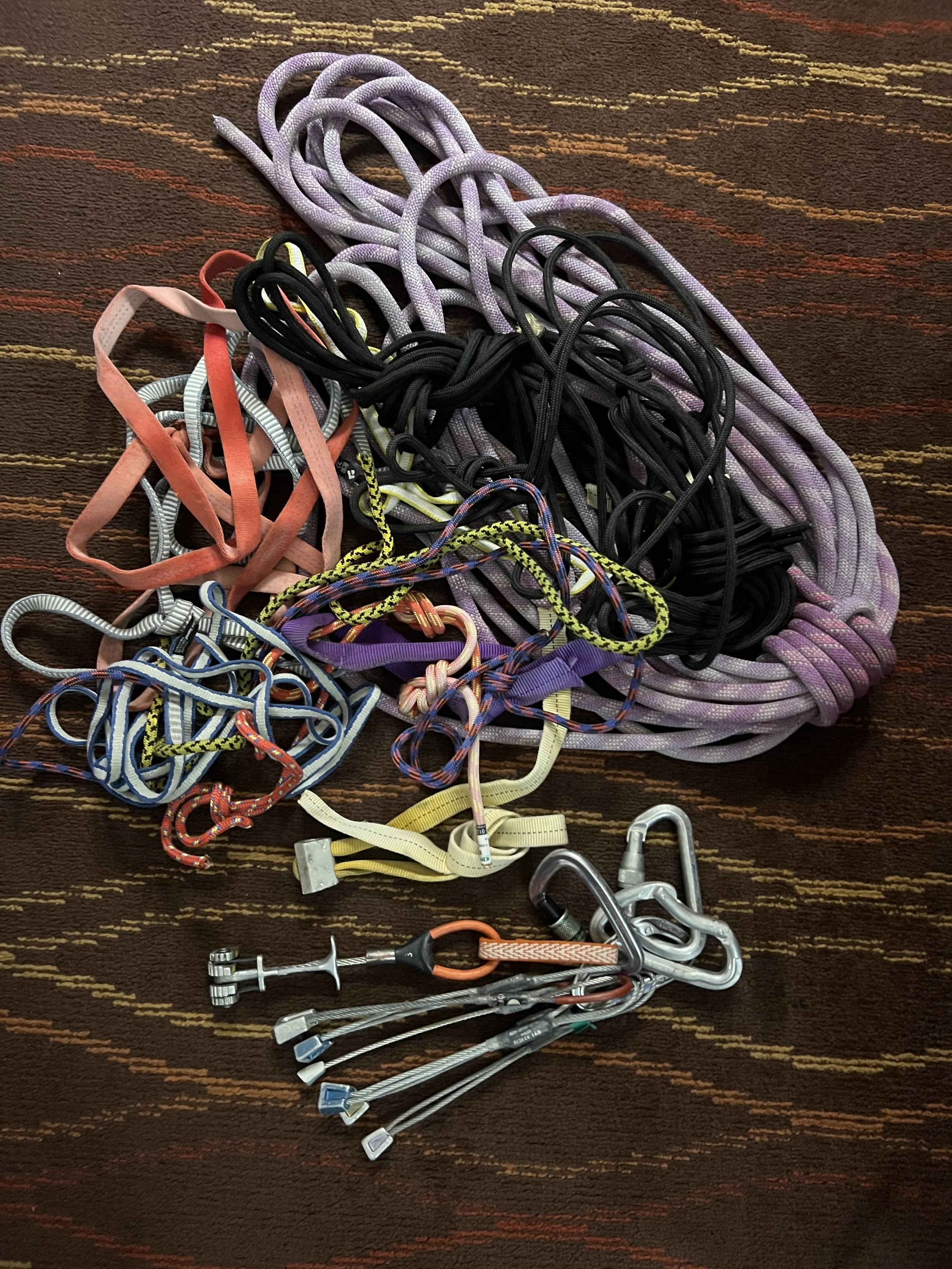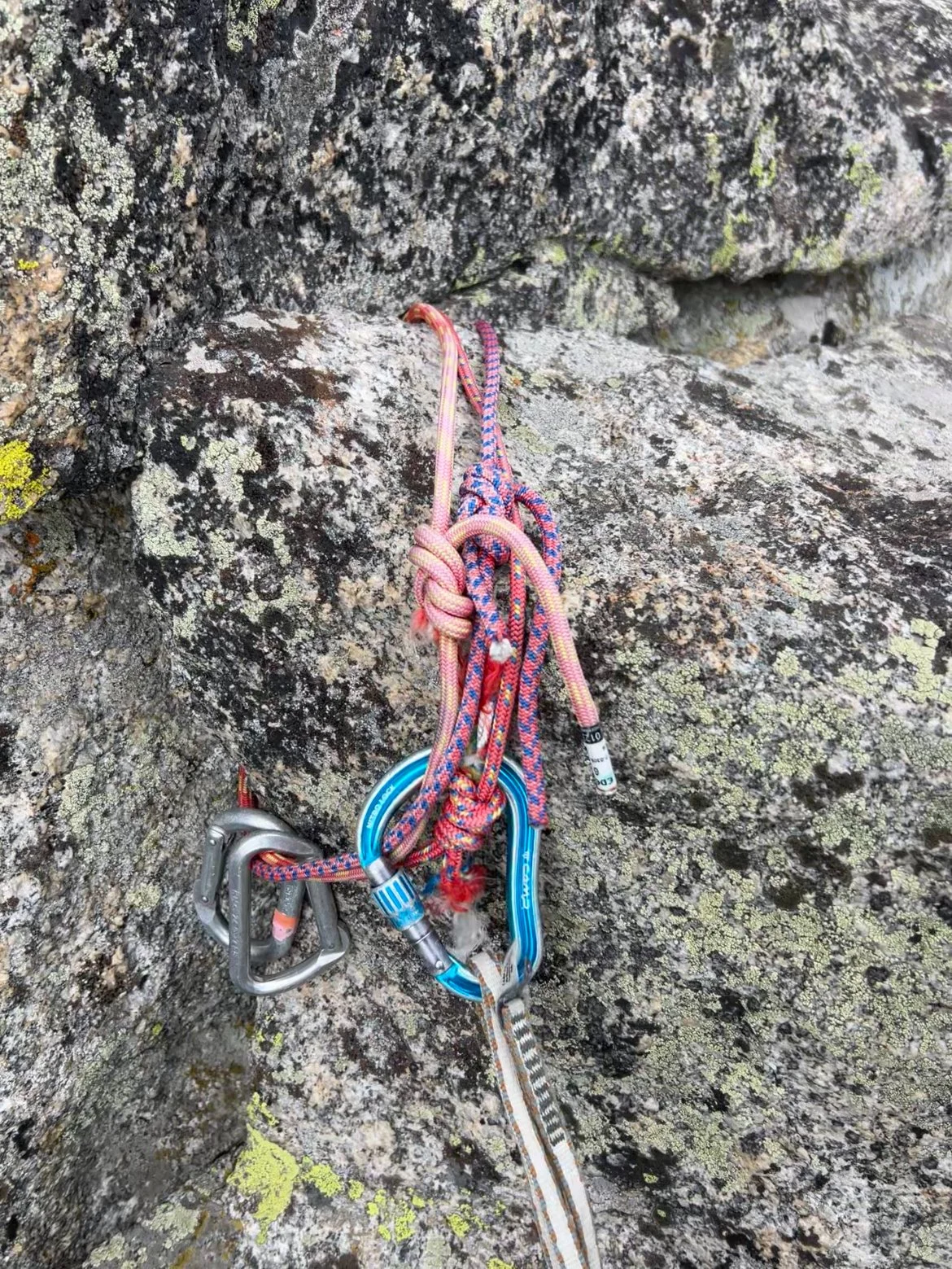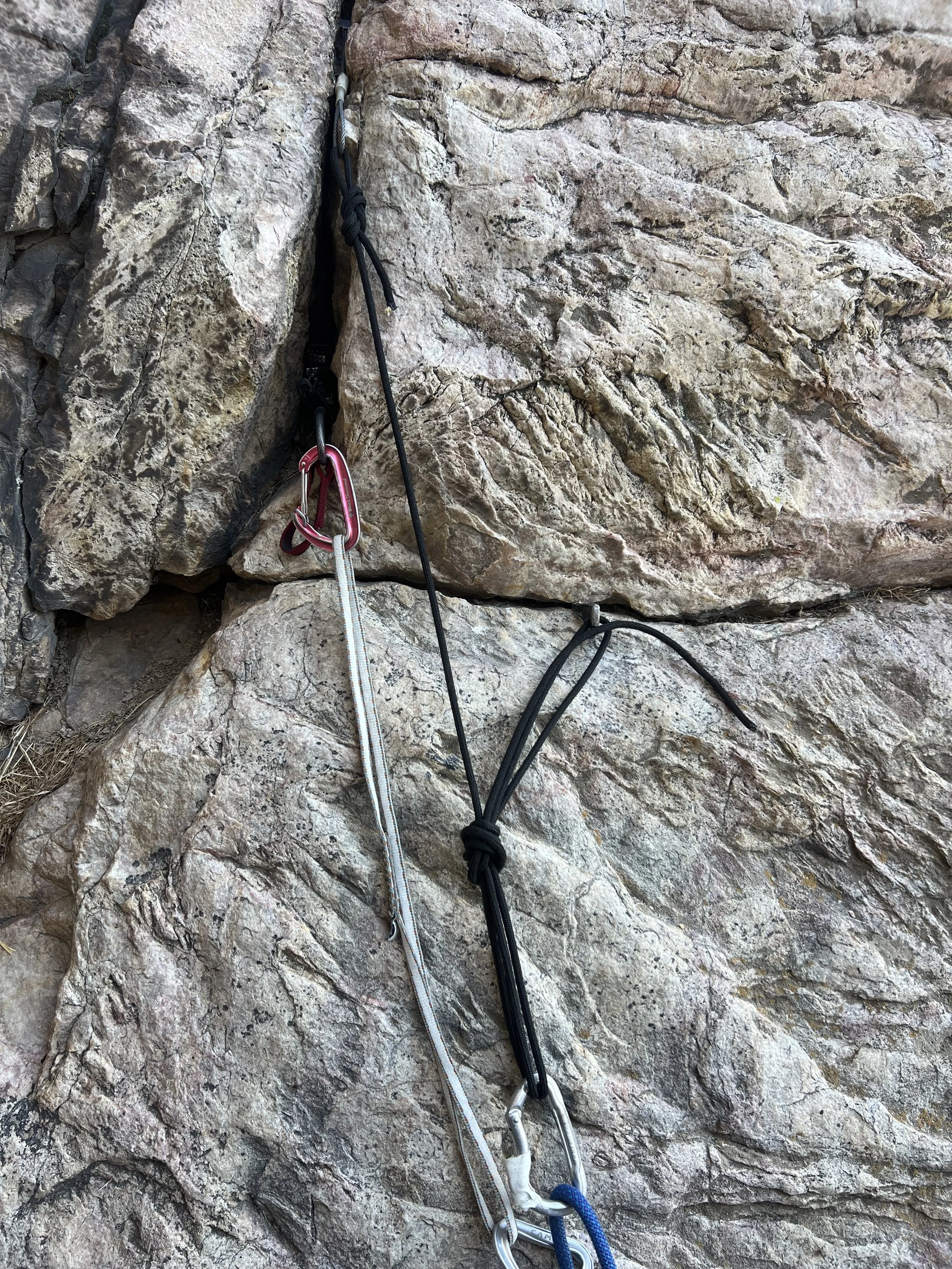Leave No Tat Behind: Responsible Anchor Practices in Alpine and Adventure Climbing
Abandoned and damaged or extraneous equipment removed from wild places in one months time.
When you're deep in the backcountry on an alpine or adventure climb, there’s one piece of gear you’re always going to rely on, whether you're going up or coming down: the anchor. Textile anchors—cord, webbing, slings—are lightweight, versatile, and often critical for building safe belays and rappels. But they don’t last forever. UV exposure, moisture, abrasion, and time all break them down.
The problem is, once those anchors degrade, they don’t magically disappear. And they don’t get replaced on their own. That’s on us, the climbers. So, if you're out in remote terrain, whether it’s a classic route in the Rockies or a long adventure climb in Western North Carolina, part of your responsibility is taking care of the anchors—including removing the old stuff and packing it out, no matter how gassed you feel after the approach and climb.
Textile Anchors: They Matter, but They Don’t Last
Anchors built from cord or webbing are common in alpine terrain because they’re light, fast, and easy to use around natural features like horns, trees, or chockstones. But textile materials are vulnerable to the elements. Sunlight weakens fibers. Moisture causes mildew and rot. Abrasion cuts into sheath and core. Animals sometimes chew into the material. The point is: textile anchors are a temporary, but necessary solution.
The rule is simple—if it looks sketchy, don’t trust it. And if you build a new anchor or reinforce an existing one, it’s good practice to remove the old, unsafe material. Leaving it behind creates confusion, encourages poor decision-making, and contributes to visual and environmental degradation of the crag.
A rappel anchor around a rock thread in the Wind River Range of Wyoming. Can you spot the material that needed replacement?
Doing the Right Thing (Even When You’re Tired)
Let’s be real. After a long climb and a big hike, the last thing anyone wants to do is spend extra time cutting away crusty webbing and stuffing it in their pack. But this is where climbing responsibility kicks in. That mess of sun-bleached tat? It’s not going to disappear on its own. Leaving it is no different than leaving trash. If you carry gear in, carry it out—whether it’s a snack wrapper or a frayed piece of anchor cord.
Smart Anchor Kit: What to Bring
Being prepared to manage anchors is about having the right tools in your kit. Here’s what should be in every adventure or alpine rack:
Fresh cord or webbing: Bring extra 6mm or 7mm cord or flat webbing specifically for anchor replacement. It’s also a good idea to buck something that is a neutral color that isn’t high visibility.
A sharp knife: Something small, light, and sharp enough to cut through old cord quickly and safely.
A few stoppers (nuts): Lightweight, inexpensive, and essential. These are perfect for reinforcing anchors, especially when you’re building from scratch or backing up sketchy placements. If one needs to be left behind, it’s a small price for a safer rappel.
Carabiners that can be left: a few carabiners to be left behind is also a good idea. I don’t usually carry specific rappel rings or quicklinks as they are often heavy and not very versatile on the climb. Instead I am willing to leave a few or all carabiners behind if necessary for a safe descent. Think of it as the price of admission for getting to play the game.
Learn the Skills Before You Need Them
You don’t have to be halfway up a remote alpine face to start learning this stuff. Places like Linville Gorge and Moore’s Wall in Western North Carolina offer terrain where you can practice gear anchors, route-finding, and judgment in real-world conditions. These crags are full of irregular features, sparse bolts, and just enough remoteness to simulate alpine-style decision-making without being days from the trailhead.
They’re ideal for getting hands-on experience with things like:
Building and equalizing natural anchors
Assessing old tat and deciding when to replace
Learning how to back up an anchor until the last person rappels
Judging when and how to reinforce gear
It’s all great prep for when the stakes are higher.
Improvised rappel anchor setup with a cam backing up the anchor. Sling on cam is left loose intentionally, and removed before last person rappels.
Set the Example
Anchor maintenance is one of those things where actions speak louder than anything else. If you're climbing with others, especially less experienced partners, take the lead. Show them how to inspect anchors. Talk through your process. And always clean up after yourself. When everyone treats the anchor as their responsibility, the whole community benefits.
Final Thoughts
Adventure and alpine climbing are about self-reliance. That includes your anchors. Textile gear wears out—sometimes fast—and once it's compromised, it becomes a liability. Building solid, reliable anchors is crucial, but so is cleaning up what’s no longer safe.
So yeah, you're tired. Your pack's already heavy. But that crusty, sun-faded sling isn't going to hike itself out—and if you don’t deal with it, someone else will have to. Be the climber who doesn’t just build it right, but leaves it right.




